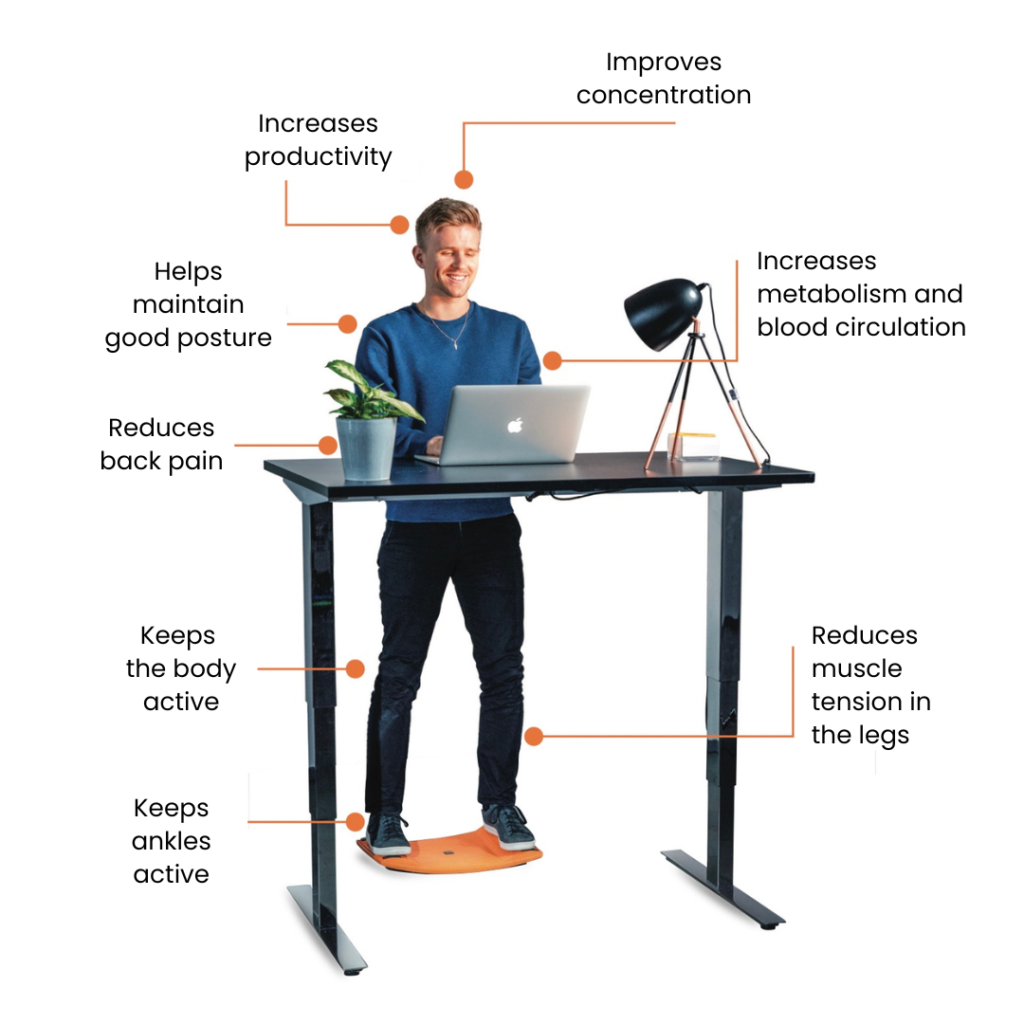Poor office ergonomics directly impacts productivity by causing physical discomfort, increasing fatigue, and reducing concentration. When employees work in environments with improper ergonomic setups, they experience more frequent distractions due to discomfort, take additional breaks to alleviate pain, and may develop long-term musculoskeletal issues. Studies show that workers in ergonomically deficient spaces report up to 30% lower productivity levels compared to those in properly designed workspaces. The combination of physical strain, decreased cognitive function, and increased absenteeism creates a measurable decline in overall workplace efficiency and output quality.
Understanding the impact of poor office ergonomics on productivity
Office ergonomics and productivity are closely connected, a fact that many organizations overlook. When employees work in poorly designed environments, their ability to perform effectively diminishes significantly. Ergonomic deficiencies create a cascade of negative effects that extend beyond simple discomfort.
The modern workplace demands long hours of focused attention, often while maintaining static postures at desks and workstations. Without proper ergonomic support, these conditions become physically taxing. As the body experiences strain, cognitive resources become diverted toward managing discomfort rather than completing tasks.
Proper ergonomics isn’t merely about comfort—it’s about creating conditions that allow workers to maintain peak performance throughout the day. When ergonomic principles are neglected, productivity suffers through increased error rates, slower work pace, and diminished creative thinking. This productivity drain represents a substantial hidden cost that affects both individual performance and organizational success.
What are the common signs of poor office ergonomics?
Poor office ergonomics manifests through several observable signs in both the physical environment and employee behaviour. Workspace deficiencies often become normalised, making them difficult to identify without deliberate assessment.
The most common physical indicators include:
- Employees frequently shifting positions or standing up to stretch
- Monitors positioned too high, too low, or at angles causing neck strain
- Keyboards and mice placed at positions requiring extended reaching
- Chairs that don’t provide adequate lumbar support
- Insufficient space for proper peripheral arrangement
- Glare on screens from improper lighting placement
Behavioural signs are equally telling. Staff members may frequently rub their necks, shoulders, or wrists. They might take more frequent breaks, complain about headaches, or demonstrate decreased focus as the day progresses. These indicators directly correlate with reduced productivity and signal the need for ergonomic intervention.
How does poor posture affect cognitive function and work output?
Poor posture creates a direct biological pathway to reduced cognitive performance. When employees maintain awkward positions for extended periods, blood flow becomes restricted to key muscle groups and, critically, to the brain itself. This circulatory impediment triggers a series of negative cognitive effects.
The physical strain of maintaining poor posture requires energy expenditure that could otherwise support mental processes. The brain, requiring approximately 20% of the body’s energy resources even at rest, experiences diminished fuel availability when the body diverts resources to compensate for postural inefficiencies.
Research indicates that poor posture correlates with measurable decreases in concentration, problem-solving ability, and memory function. Additionally, the discomfort associated with poor positioning activates stress responses, elevating cortisol levels that further impair optimal cognitive performance. These combined effects directly translate to lower quality work output, increased error rates, and diminished creative thinking—all critical components of modern workplace productivity.
Why do repetitive strain injuries significantly decrease productivity?
Repetitive strain injuries (RSIs) represent one of the most costly consequences of poor ergonomics, creating substantial productivity losses through multiple mechanisms. These injuries develop gradually as employees perform the same motions repeatedly without proper ergonomic support, leading to inflammation, nerve compression, and tissue damage.
The productivity impact operates on several levels:
- Presenteeism: Employees continue working while experiencing pain, functioning at significantly reduced capacity
- Increased error rates as pain disrupts attention and precision
- Longer completion times for routine tasks
- Formal and informal breaks taken to manage discomfort
- Extended absences for medical treatment and recovery
Common RSIs like carpal tunnel syndrome, tendonitis, and back injuries can persist for months or even years, creating long-term productivity drains. The progressive nature of these conditions means that productivity decline accelerates over time if ergonomic issues remain unaddressed. Early intervention with proper ergonomic solutions is essential for preserving productivity and preventing these debilitating conditions.
How can active workstations improve employee performance?
Active workstations represent a revolutionary approach to workplace ergonomics that directly enhances productivity. Unlike traditional static setups, active workstations encourage natural movement throughout the workday, addressing many core ergonomic issues simultaneously.
The benefits of movement-integrated workspaces include:
- Improved blood circulation and oxygen delivery to the brain
- Enhanced alertness and reduced afternoon energy slumps
- Decreased risk of repetitive strain injuries
- Better posture through dynamic positioning options
- Reduced lower back pressure and discomfort
At Gymba, our active workstation solutions are specifically designed to facilitate natural movement while working. Our products, like ergonomic activation boards, enable subtle movements that maintain muscle engagement without disrupting focus. These solutions integrate seamlessly with existing office setups, allowing employees to remain productive while benefiting from increased physical activity.
Research consistently shows that workers using active workstations experience improved concentration, enhanced creativity, and greater sustained energy throughout the day—all translating directly to measurable productivity gains.
Key takeaways: Transforming productivity through ergonomic solutions
Implementing proper ergonomic solutions represents one of the most cost-effective strategies for enhancing workplace productivity. The relationship between ergonomics and performance is clear: when employees work in physically supportive environments, their output improves in both quantity and quality.
The most impactful ergonomic interventions include:
- Adjustable workstations that accommodate different body types
- Movement-promoting equipment that prevents static positioning
- Proper lighting solutions that reduce eye strain
- Ergonomic peripherals that support natural wrist and hand positions
- Customisable seating with appropriate lumbar support
At Gymba, we’ve observed how our active ergonomic solutions transform workplace productivity by addressing these core needs. Our products are designed to integrate movement naturally into the workday, promoting better circulatory health, improved posture, and enhanced cognitive function—all essential components of peak productivity.
By prioritising ergonomics, organisations create environments where employees can perform at their best, reducing the hidden costs of discomfort, injury, and diminished mental function that poor ergonomics inevitably creates. The result is a more engaged, capable workforce delivering consistently higher quality work.

